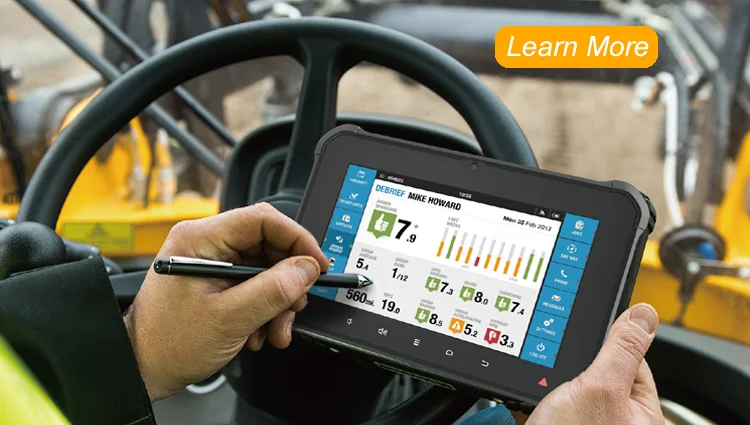Electronic Logging Devices (ELDs) have transformed the trucking industry, bringing precision and efficiency to the way drivers and fleets manage their hours of service (HOS). These devices are more than just technological upgrades; they are essential tools that ensure compliance with regulations, enhance safety, and streamline operations. Let’s dive deep into the world of ELDs and explore how they are reshaping the road.
- What are Electronic Logging Devices?
- How Do Electronic Logging Devices Work?
- Benefits of Using Electronic Logging Devices
- Regulations and Compliance
- Choosing the Right ELD for Your Fleet
- Challenges and Solutions
- Integrating ELDs with Fleet Management Systems
- Impact on Drivers
- Future of Electronic Logging Devices
- Case Studies and Success Stories
- Myths and Misconceptions About ELDs
- The Global Perspective on ELDs
- Environmental Impact of ELDs
- Conclusion
- FAQs
What are Electronic Logging Devices?
Electronic Logging Devices, commonly known as ELDs, are digital devices that automatically record a driver’s driving time and other aspects of their HOS. Initially, drivers used paper logs and then advanced to automatic onboard recording devices (AOBRDs). Today, ELDs are the standard, offering more accurate and tamper-resistant logging capabilities.
How Do Electronic Logging Devices Work?
Key Components of an ELD
An ELD comprises several components, including a screen for drivers to interact with, a connection to the vehicle’s engine, and software that records and transmits data.
Data Recording and Transmission
When the vehicle is in motion, the ELD automatically records driving time. It also tracks engine hours, vehicle movement, miles driven, and location information. This data is transmitted to fleet management systems, allowing for real-time monitoring and record-keeping.
Benefits of Using Electronic Logging Devices
Increased Accuracy in Logging Hours
ELDs provide precise and automated tracking of HOS, reducing human error and ensuring logs are accurate.
Improved Road Safety
By enforcing HOS rules, ELDs help prevent driver fatigue, a major cause of accidents, thereby enhancing road safety.
Enhanced Compliance with Regulations
ELDs ensure that drivers and fleets comply with federal regulations, avoiding hefty fines and legal issues.
Reduction in Paperwork
ELDs digitize the logging process, significantly reducing the need for manual paperwork and saving time for both drivers and administrative staff.
Regulations and Compliance
Overview of ELD Mandate in the U.S.
In the U.S., the ELD mandate came into full effect in December 2017. It requires most commercial motor vehicle drivers to use ELDs to record their HOS.
Key Regulatory Requirements for ELDs
ELDs must be certified and registered with the Federal Motor Carrier Safety Administration (FMCSA). They need to meet specific technical specifications and ensure data is secure and cannot be tampered with.
Penalties for Non-Compliance
Non-compliance can result in severe penalties, including fines, out-of-service orders, and negatively impacting a carrier’s safety rating.
Choosing the Right ELD for Your Fleet
Factors to Consider When Selecting an ELD
Consider the ease of use, compatibility with your vehicles, features offered, and customer support when selecting an ELD.
Comparison of Popular ELD Systems
Compare features, user reviews, and costs of popular ELD systems like KeepTruckin, Garmin, and Omnitracs to find the best fit for your fleet.
Cost Considerations
While the initial investment in ELDs can be significant, they often pay for themselves through savings in fuel, maintenance, and administrative costs.
Challenges and Solutions
Common Issues Faced by Carriers and Drivers
Common issues include technical glitches, initial resistance from drivers, and integration problems with existing systems.
Solutions and Best Practices
Invest in training programs, choose reliable ELD providers, and have a robust support system to address technical issues promptly.
Integrating ELDs with Fleet Management Systems
Benefits of Integration
Integration with fleet management systems allows for seamless data sharing, better route planning, and more efficient fleet operations.
How to Integrate ELDs with Existing Systems
Work with ELD providers who offer comprehensive integration support and ensure your systems are compatible.
Impact on Drivers
How ELDs Affect Daily Operations for Drivers
ELDs simplify log keeping and ensure compliance, but they can also feel intrusive. It’s essential to address driver concerns and provide adequate training.
Training and Adaptation for Drivers
Proper training on using ELDs and understanding their benefits can ease the transition for drivers, making them more comfortable with the technology.
Future of Electronic Logging Devices
Technological Advancements
Future ELDs may incorporate more advanced features like predictive analytics, enhanced GPS, and real-time data sharing.
Potential Future Regulations
Regulations may evolve to include more stringent data security measures and expanded requirements for different types of commercial vehicles.
Case Studies and Success Stories
Real-World Examples of ELD Implementation
Many fleets have successfully integrated ELDs, resulting in improved compliance, safety, and operational efficiency.
Success Metrics and Outcomes
Metrics like reduced HOS violations, lower accident rates, and cost savings highlight the benefits of ELDs.
Myths and Misconceptions About ELDs
Debunking Common Myths
Contrary to popular belief, ELDs do not spy on drivers or increase operational costs significantly. They enhance transparency and efficiency.
Clarifying Misunderstandings
Clarify that ELDs are tools for compliance and safety, not punitive measures against drivers.
The Global Perspective on ELDs
ELD Regulations in Other Countries
Countries like Canada and Mexico are implementing their own ELD regulations, with Europe following similar paths for digital tachographs.
International Compliance and Standards
International standards for ELDs ensure consistency and ease of cross-border operations for global fleets.
Environmental Impact of ELDs
Contribution to Fuel Efficiency
ELDs help in optimizing routes and reducing idle times, leading to better fuel efficiency.
Reduction in Carbon Footprint
By promoting efficient driving practices, ELDs contribute to lower emissions and a smaller carbon footprint.
Conclusion
Electronic Logging Devices have undeniably revolutionized the trucking industry. From enhancing safety and compliance to reducing paperwork and operational costs, the benefits are substantial. As technology advances and regulations evolve, ELDs will continue to play a crucial role in shaping the future of transportation.
FAQs
What is an ELD?
An ELD, or Electronic Logging Device, is a digital tool that records a driver’s hours of service automatically, ensuring compliance with regulations.
How does an ELD improve safety?
ELDs prevent driver fatigue by enforcing HOS rules, which reduces the likelihood of accidents caused by overworked drivers.
Are ELDs mandatory for all truck drivers?
Most commercial truck drivers are required to use ELDs to record their hours of service, with some exemptions based on specific criteria.
How do I choose the best ELD for my fleet?
Consider factors such as ease of use, compatibility, features, customer support, and cost when selecting an ELD for your fleet.
What happens if I don’t comply with ELD regulations?
Non-compliance with ELD regulations can result in fines, out-of-service orders, and negatively impact a carrier’s safety rating.


